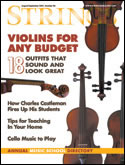|
Why does a
Prodigy instrument play like a much more expensive model?
|
| |
| |
|
|
The
people
|
| |
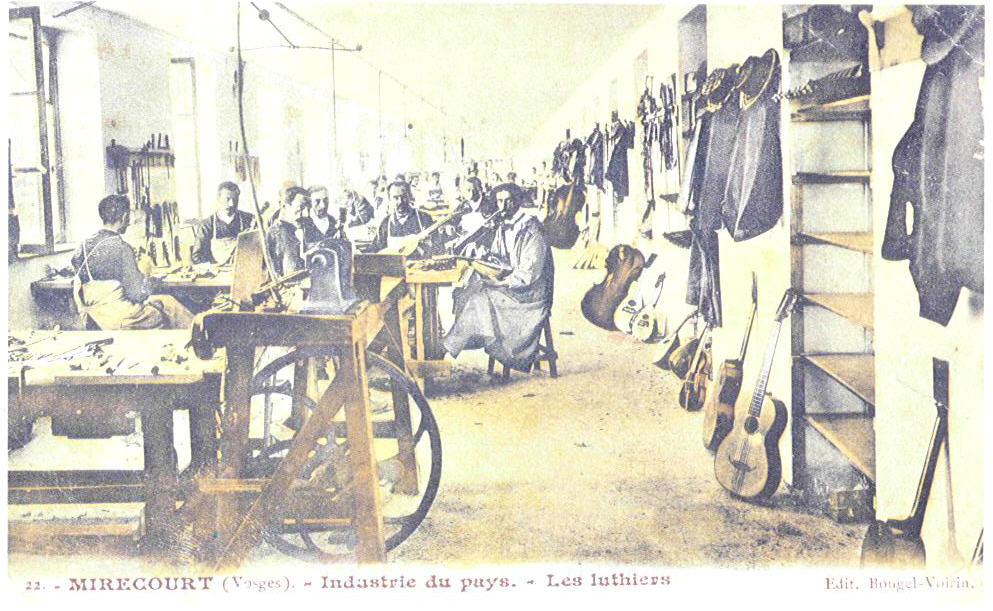
|
The master craftspeople who oversee every
step of the process are called Luthiers. The word “Lute” is
the root of this term. It refers to the maker of any string
instrument, whether bowed or plucked. Our Luthiers have made
building quality string instruments their vocation, travelling
to Europe to study with the masters. Only then do they return
to their home country and hand-craft string instruments for
Prodigy.
|
| |
|
Exceptional performance is built into every step
of the process
|
| |

|
1. The wood is hand
selected - aged spruce for the tops and maple for the backs,
ribs, necks, and scrolls.
The wood that is
chosen for the structure of the instrument will have a
great impact on the finished product. One can compare the
individual pieces of wood in a Prodigy instrument with the
ingredients that go into a gourmet meal. Even the most highly
skilled craftspeople in the world could not create a
masterpiece without the finest materials.
|

|
2. The
ribs are shaped in a rib mold.
Ribs must be thin but
strong. Their curvature imparts structural strength to
the body. But nonetheless, they are still the instrument’s
most delicate component.
|

|
3. Tops and backs are cut
from blocks of tonewood. Exterior arching is carefully shaped.
Depending on the model, tops and backs are cut from
either single pieces of tonewood, or from book-matched pairs
joined at the centre. The finely calibrated gradations in
thickness, called “graduations” are completed from the inside.
There is no machine that can perform this delicate work
with the accuracy of our luthiers. Correct graduations are
essential to how the instrument responds.
|
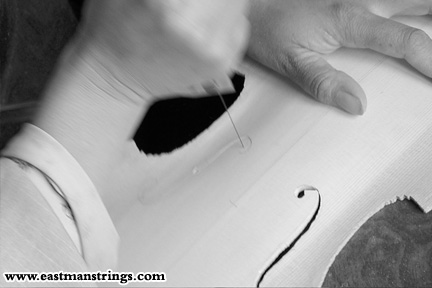
|
4.
F-Holes are cut in the tops.
F-Holes are rough cut
with a jeweller’s saw and then finished with a knife. These
holes are essential to the release of the instrument’s
sound. Experts can identify examples from historically
significant luthiers partly by the shape of their F-Holes.
|
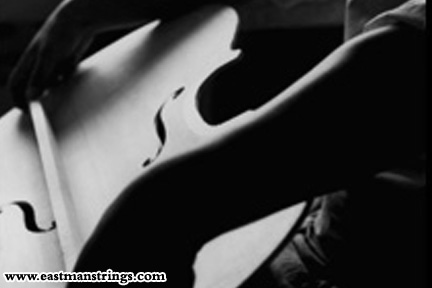
|
5. The bass bar is glued to the inside of the top.
The bass bar is a slightly springy piece of wood that
provides support and enhances the bass notes of the
instrument. It is carved to match perfectly when glued
to the interior surface of the top. Then it is shaped for
strength and tonal enhancement.
|
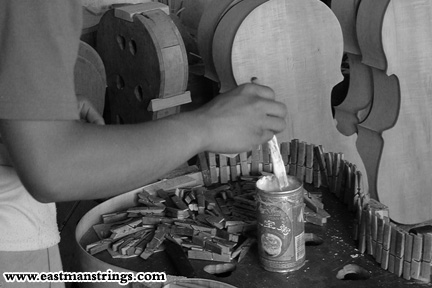
|
6. The top, back and
ribs are glued together.
The edges of the top and back
are individually shaped to exactly follow the curvature of the
ribs.
|
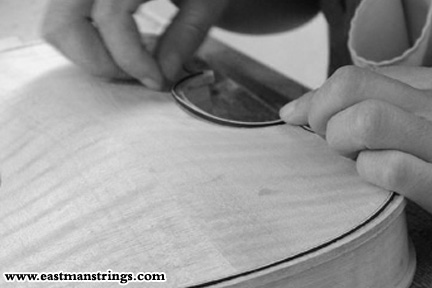
|
7. Purfling.
The three layers of
purfling are protective as well as decorative. They are
meant to prevent any edge cracks from extending to the body of
the instrument. The carving of the purfling channels must be
precise to ensure there are no gaps between the thin wood of
the purfling and the edge of the channel where it is inlaid.
Prodigy luthiers take pride in their ability to cut and
inlay the purfling as precisely as possible.
|

|
8. The
scroll is carved from aged maple.
This hand made
sculpture is the basis of the instrument’s personality. No
two Prodigy scrolls are identical. So the scroll provides
the instrument’s signature. A neck carver takes over once the
scroll is complete, properly graduating the neck to make
playing easier.
|

|
9. The completed neck and scroll are
custom fitted to the neck block.
The proper angle
and a tight fit are essential to a Prodigy instrument’s
strength, sound and delightful playability. Edges and
corners now receive their final touches.
|
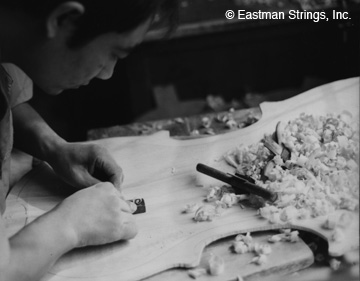
|
10. The
surface is scraped smooth.
A scraper is an unusually
shaped blade with a burred scraping edge, rather than a sharp
cutting edge. A scraped surface is superior to a sanded one
because it avoids the cloudy appearance of wood tat has been
sanded.
|
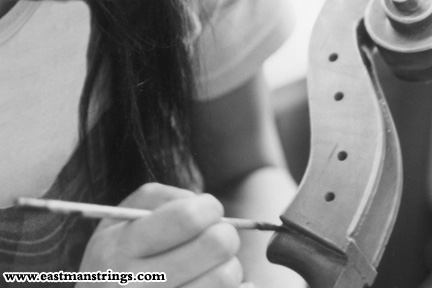
|
11. The instrument is varnished for beauty and
durability.
Brushes of different sizes are used so
that large surfaces and fine details can all be carefully
detailed. Necks are left unvarnished to provide a
smooth shifting surface. Prodigy uses modern fast drying
varnish to create a tough surface that resists scratches.
This varnish also allows the instrument to resonate better.
|

|
12. The instrument is carefully set-up to play
beautifully.
When the varnish is dry, the pegs and the
end button or endpin are fitted by hand using special tools.
Only top quality solid wood fittings are used. A custom
carved bridge and soundpost are fitted. Then the strings are
installed and the instrument is ready to play its first note.
The set-up of your Prodigy string instrument
is the final adjustment it receives before being
delivered. This includes how high the strings are from the
fingerboard, exact placement of the bridge and many other fine
details that make an instrument play well. There are
different ways to set-up an instrument. Musicians are very
particular about how their instruments are set-up. Prodigy
instruments are set up to MENC standards with a French bridge
and sacconi bridge arching. Since Prodigy instruments are
specifically intended for student musicians, every aspect
of the set-up is intended to help students play well from the
first note.
Prodigy carefully
chooses the wood and material
for our instruments to deliver an instrument with a look and
sound that is classic, rich, and smooth.
|
|
Attention to detail and proud craftsmanship create a
superior instrument
|
| |
Now that you
understand how a Prodigy instrument is created, you can see
why your Prodigy instrument will have more in common with a traditional
European instrument than the typical
machine-made European models of today.
Prodigy
instruments are designed to help musicians progress
faster. Since your instrument will be new, you can
depend on its reliability for
many years. See how your Prodigy
instrument compares to an older instrument
.
We invite you to delve further into our
story, and meet the people who are proud to
make Prodigy string instruments
.
|
|
|


